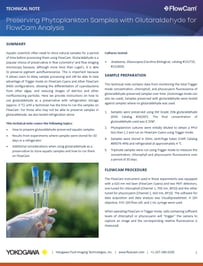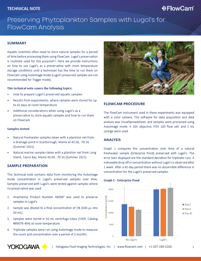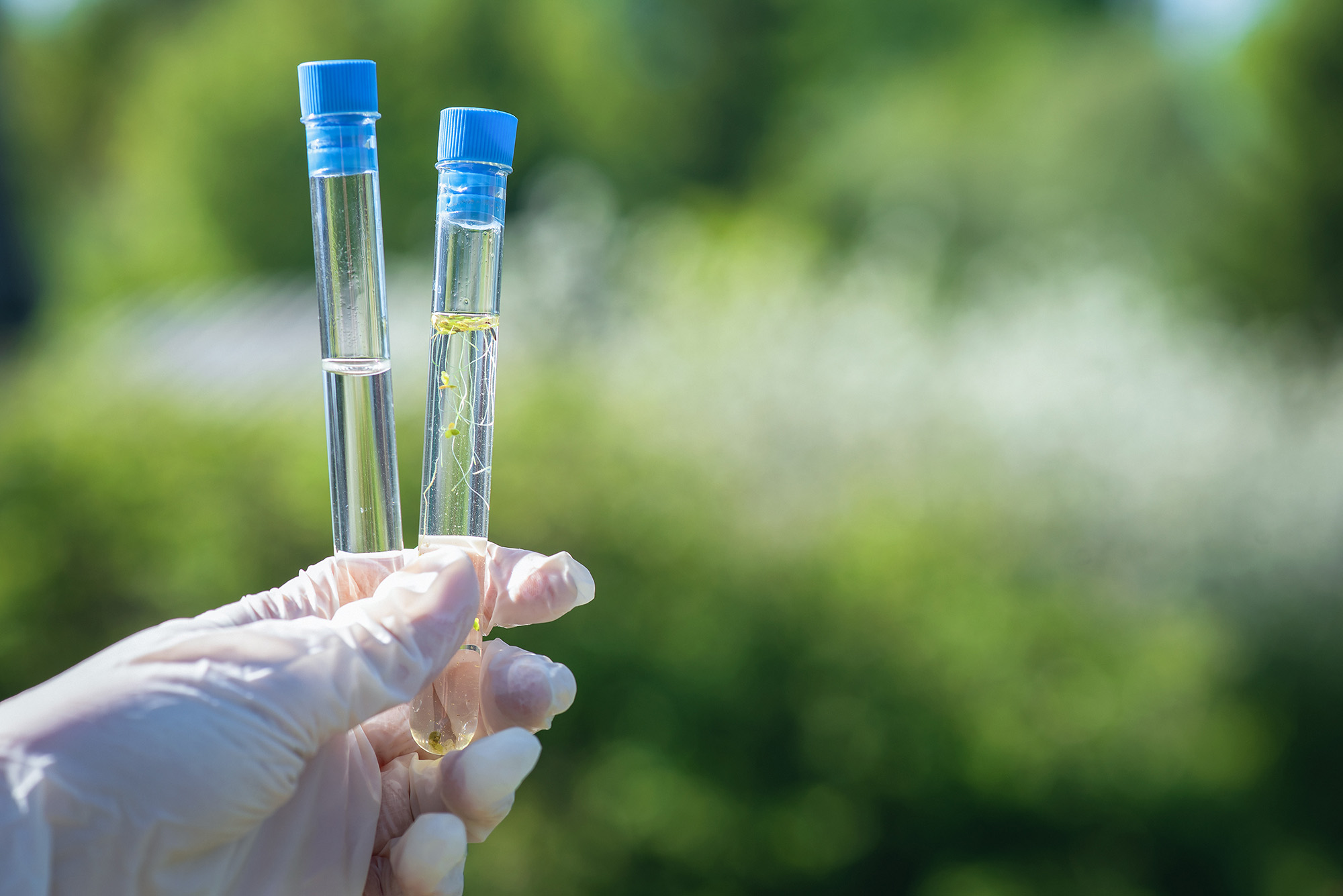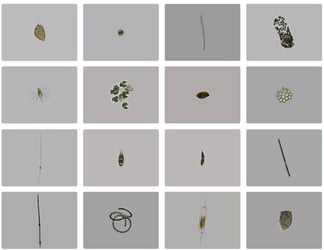Aquatic scientists often need to store natural samples for a period of time before processing them using FlowCam. There are multiple preservatives available for this purpose. Glutaraldehyde is a
popular choice of preservative because it will preserve pigment autofluorescence, and therefore allows the use of FlowCam's "Trigger Mode" to automatically distinguish cyanobacteria from other algae, and reduce images of detritus and other non fluorescing particles. Another preservative often used is Lugol's solution, which does not preserve fluorescence, but is less toxic and requires less stringent storage conditions.
Our newest technical notes below describe in detail how to prepare an aquatic sample using either glutaraldehyde or Lugol's, and show data that demonstrates how well each method can preserve a sample for a period of time (30 and 42 days respectively).
Preserving Phytoplankton Samples with Glutaraldehyde for FlowCam Analysis
 Topics Covered:
Topics Covered:
- How to prepare glutaraldehyde-preserved aquatic samples
- Results from experiments where samples were stored for 30 days in a refrigerator
- Additional considerations when using glutaraldehyde as a preservative to store aquatic samples and how to run them on a FlowCam
- Cultures tested: Anabaena, Gloeocapsa
Preserving Phytoplankton Samples with Lugol's for FlowCam Analysis
 Topics Covered:
Topics Covered:
- How to prepare Lugol’s preserved aquatic samples
- Results from experiments, where samples were stored for up to 42 days at room temperature
- Additional considerations when using Lugol’s as a preservative to store aquatic samples and how to run them on a FlowCam
- Samples tested:
- Natural freshwater samples were taken with a plankton net from a drainage pond in Scarborough, Maine (Summer 2021)
- Marine samples were taken with a plankton net off a dock in Casco Bay (Summer 2021)











